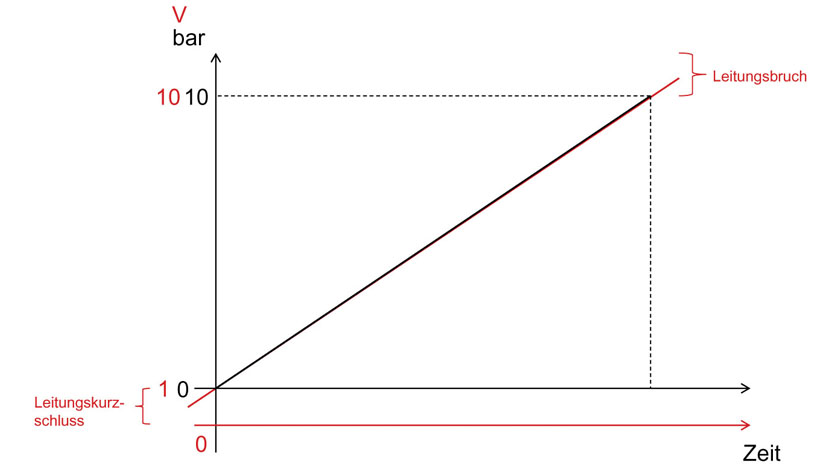
Apart from the current signals described in the article “Analogue output signals of pressure sensors 1”, the voltage signals 0 … 10 V, 1 … 5 V and 1 … 10 V are used in industrial automation for the transmission of measured values.
As with the current signals, their advantage is the ease of use and the possibility to identify problems with a simple multimeter. With voltage signals, electromagnetic interferences can easily lead to wrong readings of the measured value or of the control signal, which is why shielded lines should be used for such signals.
Very often, the voltage signals 0 … 10 V, 1 … 5 V and 1 … 10 V are used for set point signals of motors, although temperature and pressure sensors are also available with these electrical outputs. Similarly to the current signals, the actual pressure in the sensor is converted into a voltage value and transmitted via three wires. The signals 1 … 5 V and 1 … 10 V have the advantage that by setting an active zero value of 1 V, short-circuits in the line can also be detected.
See also our articles
Analogue output signals of pressure sensors 1: 4 … 20 mA
Analogue output signals from pressure sensors 3: 0.5 … 4.5 V ratiometric

